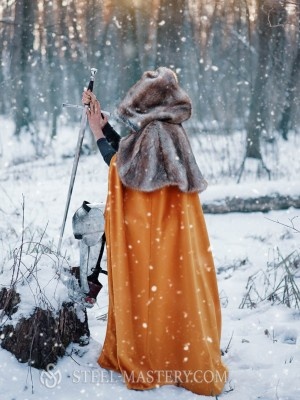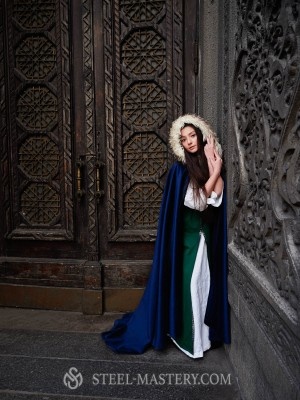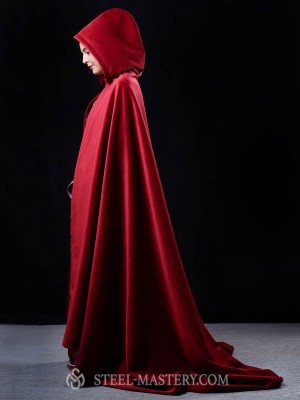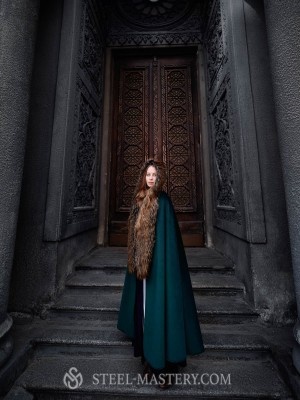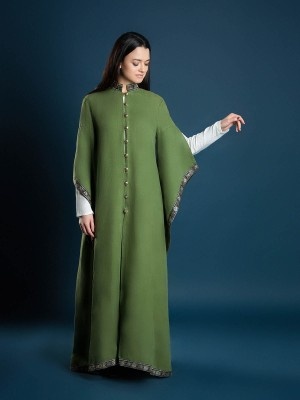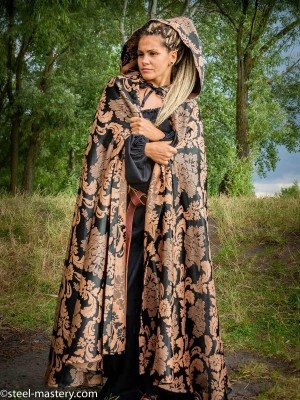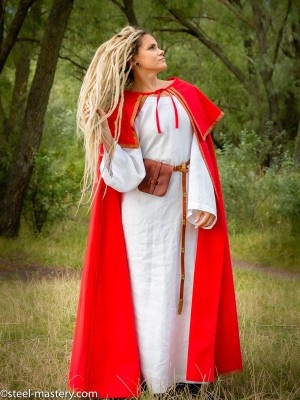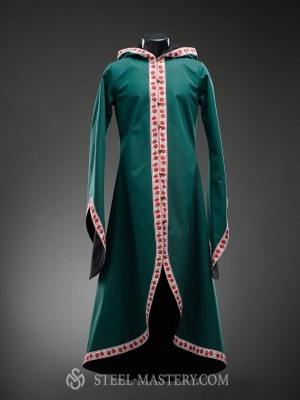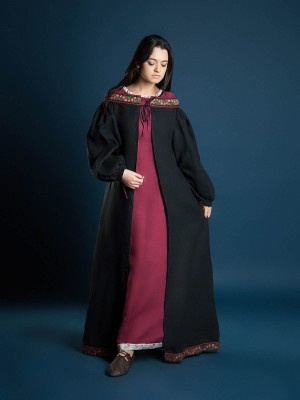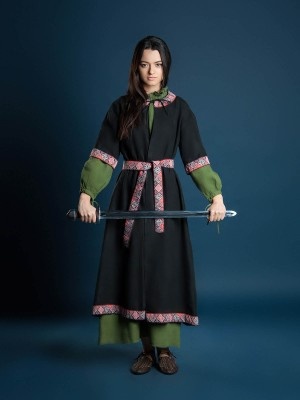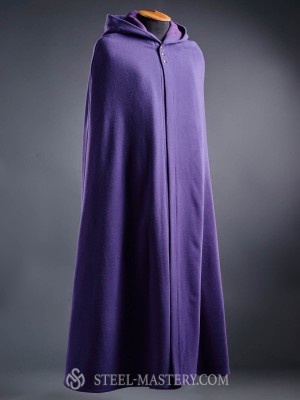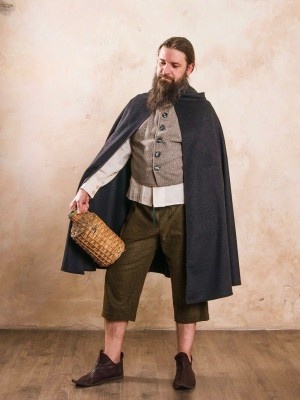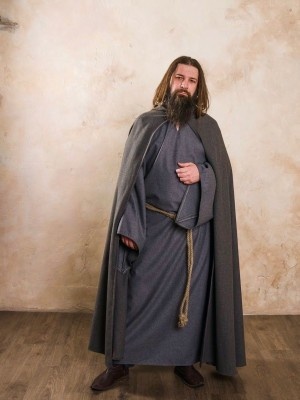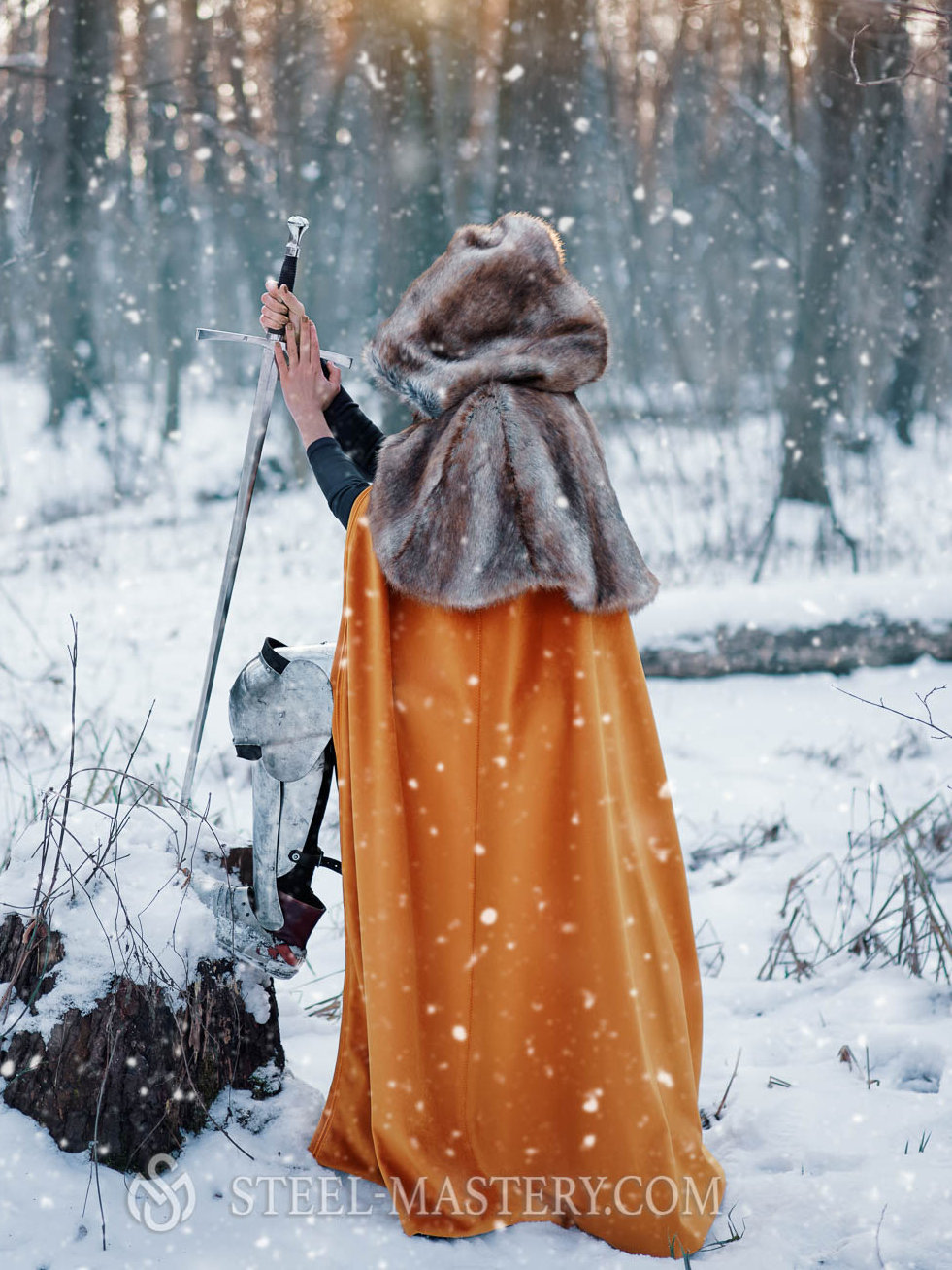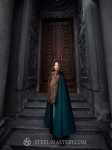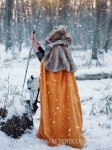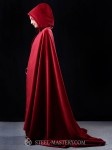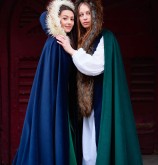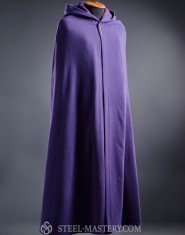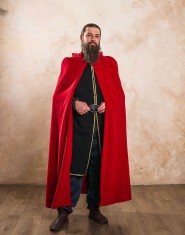Acerca de Capas
We make every item by hands according to historical analogues. Our cloaks are tailored by individual customer parameters and regards.
To order the wished model, you need to do few simple actions:
- Open the page of item;
- Choose fabric for your cape or cloak – cotton, linen, wool or velvet;
- Define the wished colour of your clothing;
- Add lining fabric and decoration (if available);
- Choose your size.
If you have any difficulties when ordering, please contact our account manager, and we will help you.
Once all options are selected, add item to cart and proceed with payment. After that, our manager will contact you with measurement request and specification of order’s details.
All models are perfect for any historical event, festival or masquerade. If you didn’t find the wished piece of clothing in this section, we can make it individually for you. Just send picture with detailed description to [email protected]. Then we will advise you price and discuss details of order.
In the early Middle Ages (up to the XII-XIII centuries), coats were main type of over clothing. Tailors were cutting it of round or half-round piece of fabric. From the neckline, cloak was draped with pleats. There are many paintings and sculptures, where we can see that people were wearing cloaks as on the both shoulders, so on the only one. In such a case, fastening usually was on the right shoulder.
Citizens and common people attached their cloaks under the chin with lacing. But noble and rich seigneur fastened such clothing on the chest with especial clasp – agrafe. Such accessory was decorated with rich enamels, embossing or gems.
Cloak often had a hood. As a result, upper clothing became perfect protection against cold, wind or rain. In addition, such cape could hide person’s face and form, so it made its owner almost unrecognizable. Hood was made of the same fabric, as cloak. Most often, there were cotton, linen or wool. Crafted leather or thin felt were used rare.
Starting the end of the XIII century, cloaks got a lining. Thigh-length capes with lining of contrast colour came into fashion. The most success these models had at young grandees and court nobility. In the cold season or for trips, people used wide one-piece cape with slashes for arms and hanging folded sleeves. This clothing was called garde-corp. Religious clerics usually used such woolen cloak.
Members of the nobility were wearing light cloak, called mantle. They draped mantle around the shoulders in such a way, that it hardly covered the shoulders and hang down the ground. Decorative trim, which joined collar edges, helped to keep mantle at place. Expensive and heavy-weight fabrics were used for this clothing. Usually, it was decorated with orphrey or fur trimming.
Cloaks were an essential part of traditional women’s outfit. Over robe or surcoat, ladies were wearing long cloaks, lined with bright ornamented fabrics and fixed with agrafe of straps under chin. Prosperous women swanked around in warm cloaks with ermine or squirrel fur.
Capes were in common use in the late Middle Ages as well. They were used for daily wearing and as gala garb for state occasions. Multi-layered clothing came into fashion. So capes and cloaks were a necessary part of outfit, consisted of dresses, tunics and shirts.
Apart from cloaks of different length, women often worn varied coats as upper clothes. These models could be sleeveless or with wide or puffed sleeves, decorated with ornamented ribbons, lacing on the edges, insets of contrast colours or embroidery.
Buttons, badges, applications of golden threads, pearls or precious gems could be added as accessories.

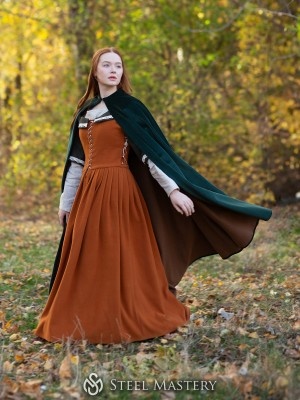
-0-3-0-1-3-300x400.jpg?v=1746523880)
